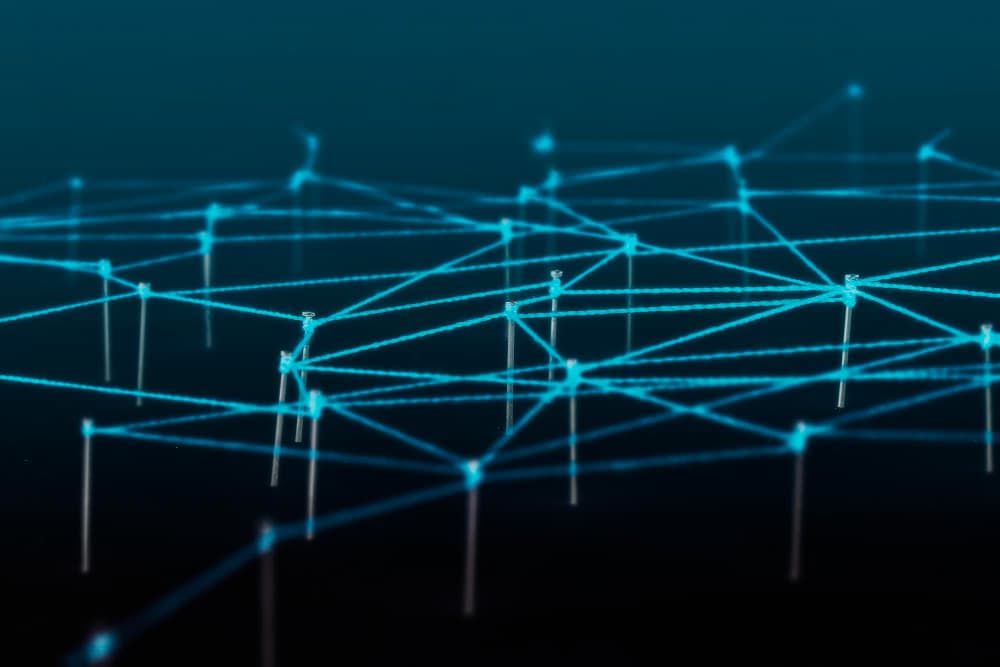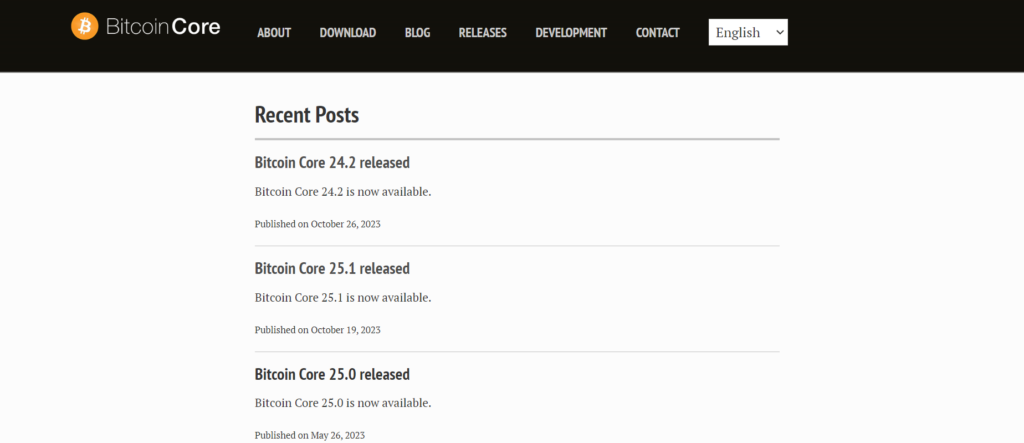
When you create a Blockchain network, it consists of several nodes that serve as the points of entry and exit for data. Each node in the network is responsible for validating transactions and blocks to ensure they are legitimate.
Each node is assigned a specific task, with some nodes being assigned one role and others another role. Depending on their purpose, each node is geared towards a different result within the network. With so many nodes available, it’s important to understand what each does for the Blockchain before creating your own or joining another.
This article will explain what a Blockchain node is and what it is used for.
Keep reading to find out.
What is a Blockchain node?
A Blockchain node is an individual computer that is connected to a Blockchain network. A Blockchain node will process transactions and verify data as it is added to the chain. The computer that is used to run a Blockchain node is also known as a full node.
This is because it stores a full copy of the Blockchain network’s transaction history. This includes all the blocks and records, including all the data points within the Blockchain. A full Blockchain node can verify any information added to the Blockchain.
This ensures the accuracy of any data and protects against any type of tampering or changes.
How do Blockchain nodes work?
A Blockchain node is an endpoint that is used to access the Blockchain network. Each Blockchain node has a copy of the Blockchain, which means that two nodes that are part of a Blockchain network will have the same data.
When you want to send tokens or make a transaction, you will need to ensure that your Blockchain node can communicate with the Blockchain node of the recipient. If not, then the transaction will not go through.
A Blockchain node can be a computer, a server, or another device connected to the internet. There are different types of Blockchain nodes, each with a specific purpose. However, all Blockchain nodes work in the same way.
Once you install the software and set it up, the network node will start to download the existing Blockchain data and distribute it to other nodes. The more nodes that are available, the quicker the Blockchain network grows.

Why are Blockchain nodes needed?
Nodes are important to the Blockchain as they help verify transactions and blocks. They also function as the gatekeepers of a Blockchain, allowing only verified users to access a Blockchain network.
Some other reasons why Blockchain nodes are needed include the following;
- Maintains the Blockchain
When you create a Blockchain network, it is initially stored on one node only. This is the Blockchain node that contains the full version of the Blockchain. The rest of the nodes will have a copy of the Blockchain, but it is not as having the full version. As the Blockchain network grows, you will need to add more nodes to maintain the integrity of the Blockchain. The more nodes present in the Blockchain, the more decentralized it will be. Having too many nodes present in the Blockchain network can also be problematic, as it will make it difficult to manage. To avoid this, you must add only as many nodes as are necessary for the network to function efficiently.
- Validating a transaction
A Blockchain node is responsible for validating each transaction that takes place on the Blockchain. This is important, as it helps to ensure that the data is correct and that no one has manipulated it. If a transaction is faulty or fraudulent, the Blockchain node will not allow it to be processed. Each Blockchain node has a list of rules it follows, which determine if a transaction is legitimate or not. For example, a Blockchain node could set a rule that says only transactions from a wallet with 10,000 tokens will be accepted. If a transaction does not meet these conditions, it will be rejected by the Blockchain node.
- Accessing information
Blockchain nodes are responsible for storing information about the Blockchain network. For instance, it can store the number of users on the Blockchain network, the wallet balances, and other information. However, a Blockchain node does not store all the information that is on the Blockchain network. It only stores a small amount of information that is important to the network as a whole. This is so that the Blockchain node can quickly access this information when needed. For example, when you send tokens to another wallet, the Blockchain node will access the information stored on it to validate the transaction and ensure that the sender has enough tokens to send.
- Helps secure a Blockchain
A Blockchain node is responsible for ensuring that the Blockchain is secure. It does this by preventing any attacks on the network that might attempt to alter the data stored on the nodes. If the Blockchain node detects any unauthorized attempts to hack the system, it will halt the attack and prevent it from succeeding. A Blockchain node can also be used to defend against cyber attacks that might attempt to bring down the network. While a single node cannot defend against a cyber attack, multiple nodes working together can defend against most attacks. There are different types of Blockchain nodes. Depending on its purpose, each node is geared towards a different result within the network. With so many nodes available, it’s important to understand what each does for the Blockchain before creating your own or joining another. That being said, let’s look at what each node does for the Blockchain.
Types of Blockchain nodes
- Full Node
A full node is the core element of any Blockchain network. It is a computer with installed software that fully replicates the Blockchain network within itself. It does not depend on any other computer for its operation. When you download a full Blockchain node software like Bitcoin core, it replicates the entire Blockchain network on your computer and acts as a full node. You should ensure that your computer has ample disk space and a strong internet connection if you want to use it as a full node. This is because each Blockchain node stores the entire Blockchain network within itself. - Pruned Full Nodes
A pruned full node combines a full node and a wallet. Such a node stores the entire Blockchain network. And it does not get pruned until the wallet is unlocked for the first time. Pruned full nodes reduce the initial Blockchain download time and make the installation quick. It requires a strong internet connection, an ample amount of disk space, and a huge amount of memory. Pruned nodes do not store transaction details. They store the hash and a few bytes of the transaction. - Archival full node
An archival full node combines a full node and an archive. It stores the full Blockchain network and a collection of all Blockchain transactions. Archival nodes are very important for auditing purposes. When a Blockchain is formed, it is very difficult to authenticate the history of the Blockchain. Archival nodes keep a record of all past transactions. And this record can be used to authenticate the Blockchain history. - Authority Nodes
Authority nodes are operated by an organization or a person to verify the participants’ identities in a Blockchain network. The nodes approve the transactions and thereby add new blocks to the Blockchain. An authority node makes sure that all the participants in the Blockchain network are authenticated. Authority nodes are also used to censor the transactions and the blocks that are not verified. Authority nodes are used in public Blockchains like Bitcoin and Ethereum. They are used to authenticate the participants and prevent the participation of malicious nodes. A person who runs an authority node is often compensated for their tedious job. - Miner Nodes
Miner nodes are the nodes that are engaged in mining cryptocurrencies. When you engage in mining, you solve complex mathematical equations to create a new block for the Blockchain. Mining nodes are rewarded with a few tokens or coins for their mining activities. Mining nodes are also known as mining rigs. A mining node is an important element of the cryptocurrency mining process. It is the computer that is used in mining. - Staking Nodes
Staking nodes are the nodes that are used in staking. To understand the staking concept, you need to know the consensus mechanism. The consensus mechanism is the process used by the Blockchain network to confirm and verify transactions. Staking nodes are used in a Proof-of-Stake (PoS) consensus mechanism. In this mechanism, the validators are randomly selected within the network. PoS is used by some Blockchains like Cardano and Ethereum. The validators in PoS are selected randomly. - Masternodes
Masternodes are nodes that are rewarded for assisting the network. They are the nodes that are always online and are used to secure the Blockchain network. Masternodes are used in Proof-of-Stake (PoS) consensus mechanism. The PoS consensus mechanism is used in currencies like Dash and PIVX. Masternodes have to lock a certain amount of tokens in the Blockchain network. If they do not lock the required amount of tokens, they cannot be the nodes. - Light Node
Light nodes are the nodes that do not store the full Blockchain network. They only store the address of the Blockchain network and the balance of their wallets. Light nodes do not affect the network because they do not store the full Blockchain data. Light nodes are used to transact cryptocurrencies and do not participate in the mining process. Light nodes are useful for people who want to transact cryptocurrencies occasionally. Light nodes do not require a huge amount of disk space and a strong internet connection. - Lightning Nodes
Lightning nodes are the nodes that are used in the Lightning Network. The Lightning Network is a second-layer solution for scalability and transaction fee issues. Lightning nodes are used to exchange cryptocurrencies and do not participate in the mining process. Lightning nodes are special nodes connected to the Blockchain network and the other Lightning nodes. Lightning nodes are primarily used to send and receive payments. And they do not affect the security of the Blockchain network. - Super Nodes
Supernodes are the nodes that are always online and are used to secure the Blockchain network. Super nodes are used in Proof-of-Stake (PoS) consensus mechanism. Supernodes are important because they verify the transactions and save the Blockchain network from spam and denial-of-service attacks. Supernodes are usually rewarded with a few tokens or coins for their work.
With this knowledge about the different types of Blockchain nodes, you can easily understand their working and importance in the Blockchain network. A Blockchain node is the heart of any decentralized network.

What is Blockchain node used for
Nodes are important to the Blockchain as they help verify transactions and blocks. Without nodes, a Blockchain network would be insecure and have no way of confirming legitimacy.
Furthermore, nodes help distribute a Blockchain network across the globe, making it decentralized and accessible to anyone with an internet connection.
Nodes also verify that all users adhere to an established set of rules and are not attempting to defraud the network or hack other users’ data. Without nodes to verify and validate transactions, this would not be possible.
The more nodes that exist within a Blockchain network, the more decentralized the network is. This is because each node holds an identical copy of the Blockchain network’s transaction history. If one node is taken offline, multiple nodes are still available to verify legitimate transactions and blocks.
How to create nodes in Blockchain
Creating nodes in the Blockchain is an incredibly exciting process that involves a lot of intricate steps. It all starts with setting up the node itself, which involves choosing the right server, downloading and installing the necessary software, and configuring the network settings.
Then you’ll need to connect to other nodes, which will help the network to reach a consensus. To do this, you’ll need to provide a list of peers to connect to and join the network. Finally, you’ll need to run the node software and begin syncing the Blockchain.
This will involve downloading and storing the entire Blockchain, which can take a while, depending on the size of the network. After it’s finished, your node will be part of the network and ready to go! Creating nodes in Blockchain may seem daunting, but the process is actually relatively simple once you get the hang of it. So if you’re looking to get involved, why not give it a try?
Conclusion
In a broader sense, Blockchain is an immutable and distributed ledger of records. Each record or block in the Blockchain is connected to previous and subsequent blocks by pointers. This creates a chain that cannot be altered once recorded.
In simple terms, a Blockchain node can be explained as the computer on which the software for mining or validating transactions operates. A Blockchain node stores the Blockchain data and propagates transactions to other nodes. Different types of nodes are used in a Blockchain network for mining and validating transactions.
See you soon,
Scaling Parrots
